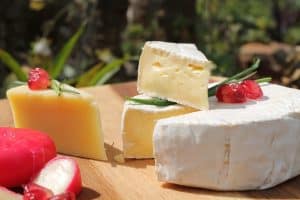Look, we all know citrus fruits are the poster children for vitamin C, but let me tell you something that might blow your mind: vegetables can pack just as much—if not more—of this essential nutrient. And honestly? Some of these veggie powerhouses make oranges look like amateurs.
Why Your Body Actually Craves Vitamin C
Here’s the thing about vitamin C that most people don’t realize: your body can’t make it on its own. Unlike other mammals, which can synthesize their own supply, we humans are basically dependent on our diet for this crucial antioxidant. Without enough of it, we’re looking at weakened immune systems, slower wound healing, and that lovely condition sailors used to get called scurvy.
But here’s where it gets interesting—while the recommended daily intake sits around 65-90mg for adults, many nutrition experts suggest we could benefit from much higher amounts. Enter vegetables: nature’s vitamin C goldmine that doesn’t come with all the sugar baggage of fruit.
The Vegetable Champions You Never Saw Coming
Red Bell Peppers: The Unsung Hero
One medium red bell pepper contains about 190mg of vitamin C—that’s more than double what you’d find in an orange. These colorful beauties aren’t just pretty; they’re packed with antioxidants that help fight inflammation and support your immune system. Plus, they’re incredibly versatile. Throw them in stir-fries, stuff them with quinoa, or just crunch on them raw.
Brussels Sprouts: The Comeback Kid
Remember when Brussels sprouts were the villain of every childhood dinner table? Well, they’re having their moment now, and for good reason. These mini cabbages pack about 75mg of vitamin C per cup, along with fiber and cancer-fighting compounds called glucosinolates. The secret to making them taste amazing? Roast them until they’re caramelized and crispy.
Broccoli: The Classic Overachiever
This green tree-looking vegetable delivers roughly 80mg of vitamin C per cup. But broccoli doesn’t stop there—it’s also loaded with vitamin K, folate, and compounds that support liver detoxification. Steam it lightly to preserve those nutrients, or try roasting it with garlic and lemon for a flavor punch.
The Dark Horses of Vitamin C
Swiss Chard: The Colorful Underdog
With its rainbow stems and dark leafy greens, Swiss chard provides about 32mg of vitamin C per cup, plus a hefty dose of magnesium and potassium. It’s particularly great for heart health and blood pressure regulation. Sauté it with some olive oil and pine nuts, and you’ve got yourself a Mediterranean masterpiece.
Sweet Potatoes: The Comfort Food Champion
One large baked sweet potato gives you around 35mg of vitamin C, along with loads of beta-carotene that converts to vitamin A in your body. These orange beauties support everything from eye health to immune function. Roast them whole, slice them into fries, or mash them up—they’re delicious no matter how you prepare them.
Making These Vegetables Work for You
The beauty of getting your vitamin C from vegetables instead of supplements lies in the package deal. You’re not just getting one isolated nutrient—you’re getting fiber, antioxidants, minerals, and other vitamins that work together synergistically.
Here’s a pro tip: Vitamin C is water-soluble and heat-sensitive, so the longer you cook these vegetables, the more nutrients you lose. Light steaming, quick sautéing, or eating them raw when possible will help you maximize their nutritional punch.
And for those worried about variety, these vegetables couldn’t be more different in terms of flavor profiles and cooking methods. From the sweet crunch of bell peppers to the earthy richness of Brussels sprouts, there’s something here for every palate.
The next time someone tells you to drink orange juice for vitamin C, maybe suggest a colorful vegetable stir-fry instead. Your body—and your taste buds—will thank you for the upgrade.







